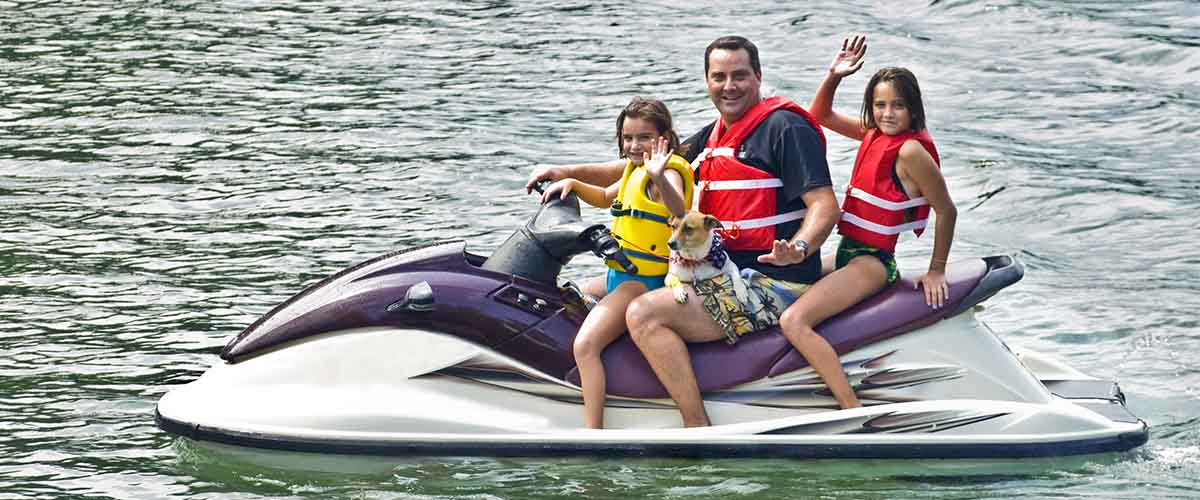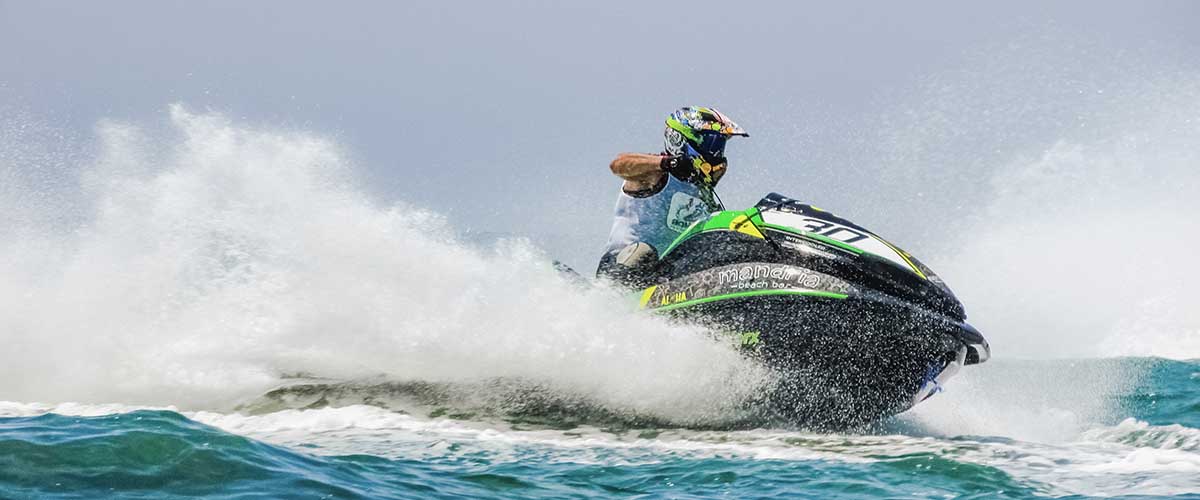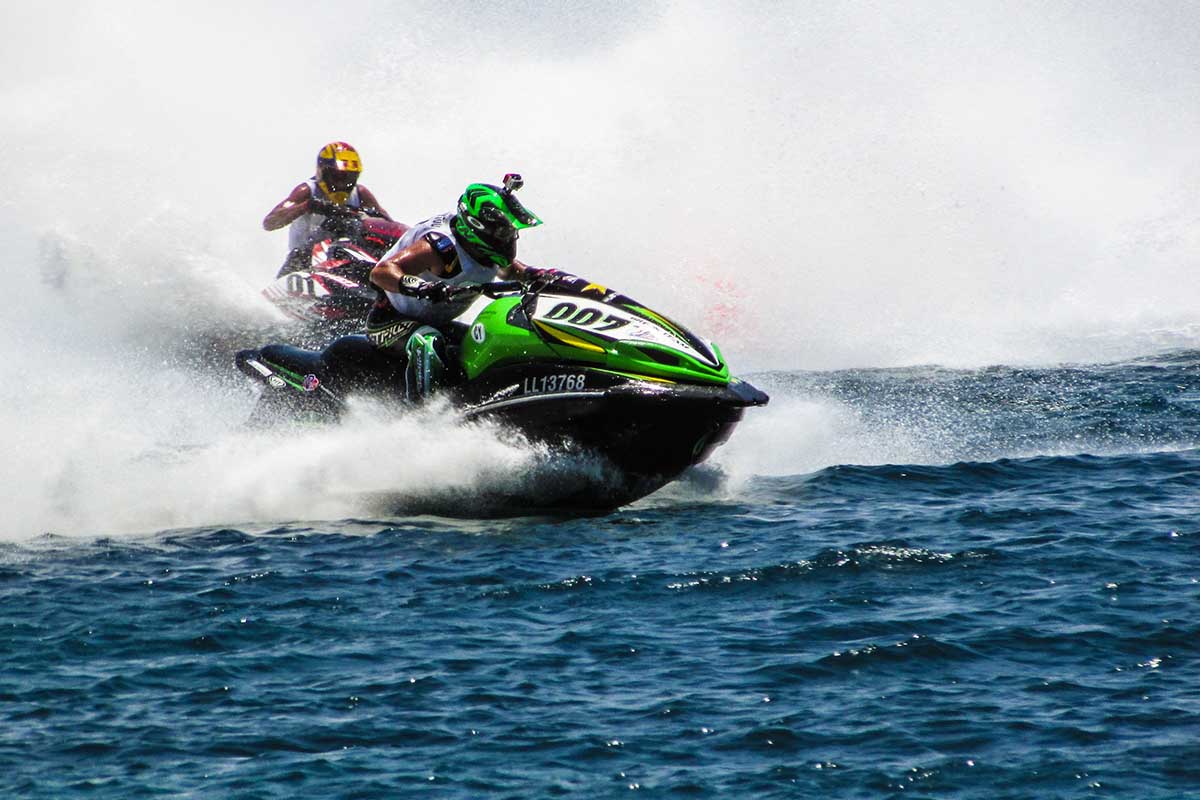The Key to Enhancing Jet Ski Performance

If you’re a jet skier looking to take your ride to the next level, then enhancing your jet ski performance is the key. Whether you’re a beginner or an experienced rider, unlocking the full potential of your jet ski can bring you excitement and thrills like never before. From boosting your speed to improving maneuverability, there are various ways to enhance your jet ski’s performance. And when it comes to renting a jet ski, why settle for anything less than the best? That’s where A2Z Powersport comes in. Located in Orange Beach, Alabama, they are the watersport experts who can provide you with top-notch jet skis to make your ride truly unforgettable. So get ready to rev up your adventure and reach new heights with A2Z Powersport.
Choosing the Right Jet Ski
When it comes to selecting the perfect jet ski for your needs, there are a few important factors to consider. Making the right choice will ensure that you have an enjoyable and thrilling experience on the water. Here are some key aspects to keep in mind when choosing a jet ski.
This image is property of i.ytimg.com.
Consider the Type of Jet Ski
The first step in choosing the right jet ski is to determine what type suits your preferences and needs. There are three main types of jet skis: stand-up, sit-down, and multi-passenger.
Stand-up jet skis are designed for experienced riders who enjoy the thrill of aggressive maneuvers and jumps. sit-down jet skis, on the other hand, provide a more relaxed and comfortable riding experience. They are ideal for leisurely cruises and for those who prefer stability and comfort. Multi-passenger jet skis are perfect for families or groups who want to ride together and share the experience.
Consider your skill level, intended use, and the number of people you plan to ride with before making your decision.
Check the Engine Power
The engine is the heart of a jet ski, so it’s crucial to check its power before making a purchase. The engine power is typically measured in horsepower (HP), and it determines the speed and performance of the jet ski.
For beginners or those who prefer a more leisurely ride, a jet ski with a lower horsepower will suffice. On the other hand, if you crave speed and want to take on the waves with adrenaline-pumping acceleration, opt for a jet ski with a higher horsepower.
It’s important to find the right balance between power and control, as a jet ski with excessive horsepower may be difficult to handle for inexperienced riders.
Evaluate the Hull Design
The hull design plays a significant role in the performance and handling characteristics of a jet ski. The hull is the bottom part of the jet ski that comes into contact with the water, and it affects the stability, maneuverability, and comfort of the ride.
There are two main types of hull designs: round and V-shaped. Round hulls offer increased stability and are perfect for beginners or riders who prefer a more relaxed experience. V-shaped hulls, on the other hand, are designed for high-performance riding. They cut through the water with ease and provide better maneuverability, but they may sacrifice stability.
Consider your riding style and preferences when choosing the hull design. If you plan to perform tricks and ride aggressively, a V-shaped hull may be the better option. However, if you value stability and comfort, a round hull is the way to go.
Regular Maintenance and Servicing
To keep your jet ski in optimal condition and enhance its performance, regular maintenance and servicing are crucial. By following these maintenance tips, you can extend the life of your jet ski and ensure that it operates at its best.
Keep the Engine Clean
Proper cleaning of the engine is essential to prevent the buildup of dirt, grime, and saltwater residue. Regularly rinsing the engine with fresh water after each ride will help remove any debris and salt that may have accumulated. Avoid using high-pressure water as it can damage sensitive engine components.
Additionally, it’s important to inspect the engine for any signs of leaks, loose connections, or damaged parts. Addressing these issues promptly will prevent further damage and performance issues.
Check for Proper Lubrication
Lubrication is crucial for the smooth operation of your jet ski‘s moving parts. It’s essential to regularly inspect and lubricate components such as the throttle cable, steering system, and various pivot points. Follow the manufacturer’s guidelines for the recommended lubricants and intervals.
Proper lubrication will prevent friction and wear, ensuring that your jet ski performs optimally and remains reliable.
Inspect the Impeller and Jet Pump
The impeller and jet pump are integral components of the jet ski’s propulsion system. Regularly inspecting and cleaning the impeller and jet pump will help maintain their efficiency and performance.
Check the impeller for any signs of damage or wear, as even small dents or cracks can affect its performance. Also, ensure that there are no obstructions such as weeds or debris lodged in the jet pump, as this can impede water flow and reduce thrust.
Regular maintenance and servicing will not only keep your jet ski in peak condition but also maximize its performance on the water. By taking care of your jet ski, you can enjoy uninterrupted fun and exhilarating rides for years to come.
Upgrading Your Jet Ski
If you’re looking to take your jet ski performance to the next level, upgrading certain components can make a significant difference. Here are some performance modifications and upgrades that can enhance the speed, acceleration, and overall performance of your jet ski.
This image is property of i.ytimg.com.
Consider Performance Modifications
Performance modifications can involve changes to the engine, exhaust system, fuel system, or other components to increase power output and performance. It’s essential to consult with experts or professionals who specialize in jet ski modifications to ensure that the upgrades are suitable for your specific model.
Common performance modifications include installing aftermarket intake kits, upgrading the exhaust system, and fine-tuning the fuel delivery system. These modifications can result in a noticeable increase in horsepower and performance.
Upgrade the Intake System
The intake system of a jet ski is responsible for supplying air to the engine, and upgrading it can enhance overall performance. Aftermarket intake kits are available that optimize airflow, increasing horsepower and throttle response.
An upgraded intake system can provide better acceleration and top speed, making your jet ski more exciting and thrilling to ride.
Install a Performance Impeller
The impeller is one of the key components responsible for generating thrust in a jet ski. upgrading to a performance impeller can have a significant impact on the overall performance and handling of your jet ski.
Performance impellers are designed to increase water flow, resulting in improved acceleration, top speed, and maneuverability. However, it’s important to select an impeller that is suitable for your jet ski model and riding preferences, as an incorrect impeller choice can negatively affect performance.
Consulting with professionals who specialize in jet ski upgrades can help you make informed decisions and ensure that the upgrades are compatible with your specific model and riding goals.
Improving Fuel Efficiency
In addition to enhancing performance, improving fuel efficiency can help you get more out of each ride and save on operating costs. By implementing these tips, you can optimize fuel consumption and maximize the range of your jet ski.
This image is property of www.jetdrift.com.
Use the Right Fuel Type
Using the correct fuel type is crucial for optimal performance and fuel efficiency. Check the manufacturer’s recommendations to determine the suitable fuel for your jet ski. Using a fuel with a lower octane rating than recommended can lead to reduced performance and potentially damage the engine.
Avoid using ethanol-blended fuels if possible, as they can lead to issues such as fuel system corrosion and poor performance. Opt for non-ethanol or premium fuels for the best results.
Monitor the Fuel Consumption
Monitoring your jet ski’s fuel consumption can help you identify any irregularities and make adjustments as needed. Keep track of the distance traveled and the amount of fuel consumed to calculate the average fuel consumption per mile or hour.
If you notice a significant increase in fuel consumption, it may indicate an issue with your jet ski’s engine or fuel system. Addressing these issues promptly can prevent further fuel wastage and ensure optimal performance.
Regularly Clean or Replace the Fuel Filter
The fuel filter is responsible for removing impurities and contaminants from the fuel before it reaches the engine. Over time, the fuel filter can become clogged, reducing fuel flow and causing performance issues.
Regularly cleaning or replacing the fuel filter according to the manufacturer’s guidelines will ensure that your jet ski’s fuel system remains clean and free from debris. A clean fuel system will improve fuel efficiency and prevent potential damage to the engine.
By implementing these fuel efficiency tips, you can make the most out of each tank of fuel and extend your riding range. Enjoy longer rides without worrying about fuel consumption, and explore the open waters to the fullest.
Mastering Riding Techniques
To truly enhance your jet ski performance, it’s essential to master the proper riding techniques. By improving your skills and adopting efficient riding methods, you can maximize the potential of your jet ski and take your riding experience to new heights.
This image is property of www.jetdrift.com.
Perfect Your Body Positioning
Proper body positioning is key to maintaining balance and control while riding a jet ski. By positioning your body correctly, you can optimize stability and maneuverability, allowing for more precise and controlled movements.
Keep your knees slightly bent and your weight evenly distributed between your feet. Avoid leaning too far forward or backward, as this can affect stability and handling. By maintaining a neutral and balanced body position, you’ll be able to navigate turns, waves, and jumps with ease.
Learn How to Navigate Turns
Mastering how to navigate turns is essential for a smooth and enjoyable ride. When approaching a turn, gradually reduce your speed and lean into the turn by shifting your body weight to the inside of the curve. This will help maintain balance and prevent the jet ski from tipping over.
Avoid making sudden or jerky turns, as this can result in loss of control or instability. Practice gradual and controlled turns to improve your technique and confidence. With time and practice, you’ll be able to tackle tight turns and navigate curves effortlessly.
Practice Efficient Throttle Control
Efficient throttle control is key to achieving optimal acceleration and smooth riding. Maintaining a consistent and steady throttle input will help you maintain balance, control, and improve fuel efficiency.
Avoid sudden or erratic throttle inputs, as this can lead to instability or loss of control. Gradually apply and release throttle as needed, taking into account the water conditions and your desired speed. Practice finding the optimal throttle position for different riding scenarios to improve your overall riding experience.
By mastering these riding techniques, you’ll be able to fully unleash the potential of your jet ski. Navigate with confidence, perform tricks with precision, and enjoy the thrill of riding to the fullest.
Using the Right Accessories
To enhance your jet ski performance and overall riding experience, investing in the right accessories can make a significant difference. From safety gear to performance-enhancing additions, these accessories can take your jet ski adventures to new heights.
This image is property of www.jetdrift.com.
Invest in a Quality Life Jacket
Safety should always be a top priority when riding a jet ski. Investing in a high-quality life jacket is essential to ensure your safety in case of emergencies or accidents. Look for a life jacket that is Coast Guard-approved and provides a comfortable fit.
A well-fitting life jacket will allow you to move freely while providing the necessary buoyancy and protection. Choose a life jacket that meets your specific needs, whether it’s for leisurely cruising, racing, or performing tricks.
Use a Performance Ride Plate
A performance ride plate is a hydrodynamic accessory that attaches to the bottom rear section of the jet ski hull. It helps improve stability, maneuverability, and overall performance by optimizing water flow beneath the jet ski.
By reducing drag and enhancing water flow, a performance ride plate can increase acceleration, top speed, and fuel efficiency. Consider consulting with professionals or experts to determine the most suitable ride plate for your jet ski model and desired riding style.
Install a Handlebar Grip
The handlebar grip is an often overlooked but essential accessory that can greatly enhance rider comfort and control. Ensure that the handlebar grip provides a secure and non-slip grip, as this will enable you to maintain control even in wet conditions.
Additionally, consider choosing a handlebar grip with ergonomic features or specialized grips that minimize hand fatigue during long rides. By improving your grip and reducing strain, you’ll be able to ride comfortably and confidently for extended periods.
By using the right accessories, you can optimize your jet ski’s performance and enhance your overall riding experience. Invest in safety gear, consider performance-enhancing additions, and make your time on the water more enjoyable and exciting.
Understanding Weight Distribution
Proper weight distribution on your jet ski is crucial for optimal performance and stability. By properly balancing and distributing the weight, you can achieve better acceleration, maneuverability, and overall handling.
Balance the Weight Properly
Balancing the weight on your jet ski involves distributing it evenly between the front and rear. This ensures that the hull is properly supported and balanced, allowing for better stability and maneuverability.
Avoid placing all the weight on either end of the jet ski, as this can negatively impact performance and handling. Instead, position yourself and any additional passengers or gear in a way that evenly distributes the weight across the jet ski.
Avoid Overloading the Jet Ski
Overloading your jet ski with excessive weight can significantly affect its performance and handling capabilities. Each jet ski has a maximum weight capacity specified by the manufacturer, and it’s crucial to adhere to these guidelines.
Exceeding the weight capacity can lead to reduced stability, increased fuel consumption, and decreased acceleration and top speed. Be mindful of the weight limits and ensure that you’re within the recommended range for optimal performance.
Distribute the Weight for Optimal Performance
In addition to balancing the weight, distributing it strategically can further enhance your jet ski’s performance in different water conditions. For example, by shifting the weight slightly forward, you can achieve better control and stability in rough waters.
Experiment with the weight distribution and observe the impact on your jet ski’s handling and performance. By finding the optimal weight distribution for different riding scenarios, you can adapt to various water conditions and make the most out of your jet ski.
Understanding how weight distribution affects your jet ski’s performance is key to unlocking its full potential. By properly balancing and distributing the weight, you can experience smoother rides, improved maneuverability, and enhanced overall performance.
Optimizing the Jet Ski for Different Water Conditions
Water conditions can vary greatly, and optimizing your jet ski for different scenarios can greatly enhance your riding experience. By adjusting key components and settings, you can maximize performance and ensure a smooth and enjoyable ride.
Adjust the Trim for Calm Waters
The trim of a jet ski refers to the angle of the jet ski’s hull in relation to the surface of the water. By adjusting the trim, you can optimize the jet ski’s performance based on the water conditions.
In calm waters, it’s generally recommended to set the trim to a higher angle. This lifts the bow of the jet ski, reducing drag and allowing for better top speed and fuel efficiency. Experiment with different trim settings to find the optimal balance between speed and stability.
Consider Changing the Impeller Pitch
The impeller pitch refers to the angle of the impeller’s blades. Changing the impeller pitch can have a significant impact on your jet ski’s acceleration and top speed.
For rougher waters or when maximum acceleration is desired, consider using an impeller with a lower pitch. This will provide more torque and improve low-end acceleration. On the other hand, if you’re riding in calm waters and seeking higher top speeds, opt for an impeller with a higher pitch to achieve better top-end performance.
Choose the Right Hull Shape
The hull shape of a jet ski greatly impacts its performance and handling characteristics in different water conditions. There are various hull shapes available, each designed for specific purposes and riding styles.
For example, a flat or semi-V hull is commonly found in jet skis designed for racing or aggressive riding. It allows for quick turns and nimble maneuverability. On the other hand, a deep-V hull provides better stability and comfort in rough waters, making it suitable for leisurely cruises.
Consider the water conditions you typically encounter and your desired riding style when choosing the hull shape. By selecting the appropriate hull design, you can optimize your jet ski’s performance and enjoy a smooth and controlled ride in any water condition.
Adapting to different water conditions and optimizing your jet ski accordingly will greatly enhance your riding experience. By adjusting the trim, considering impeller pitch, and choosing the right hull shape, you can ride with confidence and maximize your jet ski’s performance in any setting.
Safety Measures for Enhanced Performance
While enhancing jet ski performance is exciting, it’s crucial to prioritize safety to ensure a safe and enjoyable ride. By following these safety measures, you can minimize the risk of accidents and ensure that you’re riding responsibly.
Always Wear a PFD
A Personal Flotation Device (PFD), also known as a life jacket, is crucial for your safety while riding a jet ski. Wearing a PFD can save lives in case of emergencies or accidents.
Choose a PFD that is well-fitting, comfortable, and Coast Guard-approved. Ensure that it provides proper buoyancy and does not hinder your movements while riding. Always wear your PFD properly, fastened according to the manufacturer’s instructions.
Follow Local Rules and Regulations
Each region may have specific rules and regulations regarding jet ski operation. It’s important to familiarize yourself with and adhere to these guidelines to ensure your safety and the safety of others.
Become familiar with speed limits, no-wake zones, and any other restrictions or regulations that may apply to the bodies of water you plan to ride in. Respect the environment and wildlife, and be mindful of other watercraft and swimmers.
Equip the Jet Ski with Proper Safety Gear
In addition to wearing a PFD, there are other safety gear and accessories that can enhance your safety on the water. Consider equipping your jet ski with a whistle or horn to alert others in case of an emergency. A properly functioning fire extinguisher is also a must-have safety item.
Other safety gear to consider includes a first aid kit, an emergency flotation device, and a waterproof GPS or communication device. These additional safety measures ensure that you’re prepared for any situation that may arise.
By prioritizing safety, you can enjoy your jet ski adventures with peace of mind. Take the necessary precautions, follow the rules and regulations, and equip yourself with the appropriate safety gear to enhance your performance while keeping yourself and others safe.
Choosing the Right Riding Gear
Having the right riding gear is essential for comfort, protection, and overall enjoyment while riding a jet ski. Here are some key gear items that you should consider investing in.
Pick a Helmet for Head Protection
A helmet is an important piece of protective gear that provides head protection in case of accidents or falls. Look for a helmet specifically designed for water sports, as it offers better water resistance and buoyancy.
Ensure that the helmet fits snugly and comfortably. It should not obstruct your vision or limit your movements. Opt for helmets with features such as adjustable straps and ventilation to maximize comfort.
Wear Protective Clothing
Wearing the right clothing is crucial for protection against the elements and potential injuries. Opt for lightweight, quick-drying materials that offer UV protection.
Consider wearing a wetsuit or rash guard to protect your skin from sunburn and abrasions. Neoprene gloves and booties can also provide added comfort and protection. Additionally, wearing a wetsuit or a buoyancy aid underneath your PFD can provide an extra layer of safety in case of emergencies.
Use Impact-Resistant Eyewear
Protecting your eyes from the sun, water spray, and debris is important while riding a jet ski. Invest in impact-resistant eyewear or goggles that provide UV protection and are designed for water sports.
Ensure that the eyewear fits securely and comfortably. Look for features such as anti-fog coatings and adjustable straps to optimize visibility and comfort.
By choosing the right riding gear, you can ride comfortably, protected, and enjoy your jet ski adventures to the fullest. Prioritize safety, protect yourself from the elements, and enhance your overall riding experience with the appropriate gear.
In conclusion, enhancing jet ski performance involves considering various factors such as the type of jet ski, engine power, hull design, regular maintenance, and servicing. Upgrading certain components, improving fuel efficiency, mastering riding techniques, using the right accessories, understanding weight distribution, optimizing for different water conditions, and following safety measures are also key to maximizing jet ski performance. By taking into account these factors and implementing the recommended tips and practices, you can enjoy thrilling and safe rides on the water. Consider renting your jet skis from the watersport experts at A2Z Powersport located in Orange Beach, AL, at the Fort Morgan Marina. They offer a wide range of well-maintained jet skis and can provide expert advice to ensure you have a memorable and exhilarating experience.













